All of my content has been about exploring various West African/African ingredients in somewhat of an academic/historical way. It can be a lot of information to work through weekly, so I thought I would start a semi-regular casual newsletter series to catch you all up on what I am cooking.
In parallel to my culinary deep dives, I have been cooking a lot of fun recipes that have inspired me or allowed me to use some of the ingredients I have shared in my newsletter. I spent all of 2024 working on a cookbook, so it has been nice to ease back into cooking for myself and switching up my meals. Also, since my cookbook is focused on Ghanaian recipes, I have had to pause Ghanaian food content until the book comes out, allowing me to dig into other West African food cultures. My in-depth recipes live on my YouTube channel and my website, while my more casual cooking lives on my social media pages. I am a compartmentalizer, so every space has its own functions. Here is a round-up of the recipes I have been making.
West African Peanut Stews
If there is one thing I am vehemently against on social media, it is the plague of the mystical African peanut stew or West African peanut stew. Many of this recipe misrepresent West African cooking, cobling together various West African cooking traditions into one stew. This has put me on a mission where I am trying to build my repertoire of peanut-based stews found across West Africa, and so far, I have 4. Two from Ghana — Groundnut Soup and Bitɔ/Bra Soup (cookbook exclusive), one from Senegal (Senegalese Mafe) and I am currently working on my fourth, which is Miyan Taushe — a Hausa peanut, pumpkin, vegetable soupy stew. All of these recipes surprise me in their different approaches to using peanuts. The peanuts are either roasted and crushed, roasted and blended into a paste or raw and crushed. The possibilities are endless. They are all paired with various staple foods from fonio to rice to masa to fufuo.
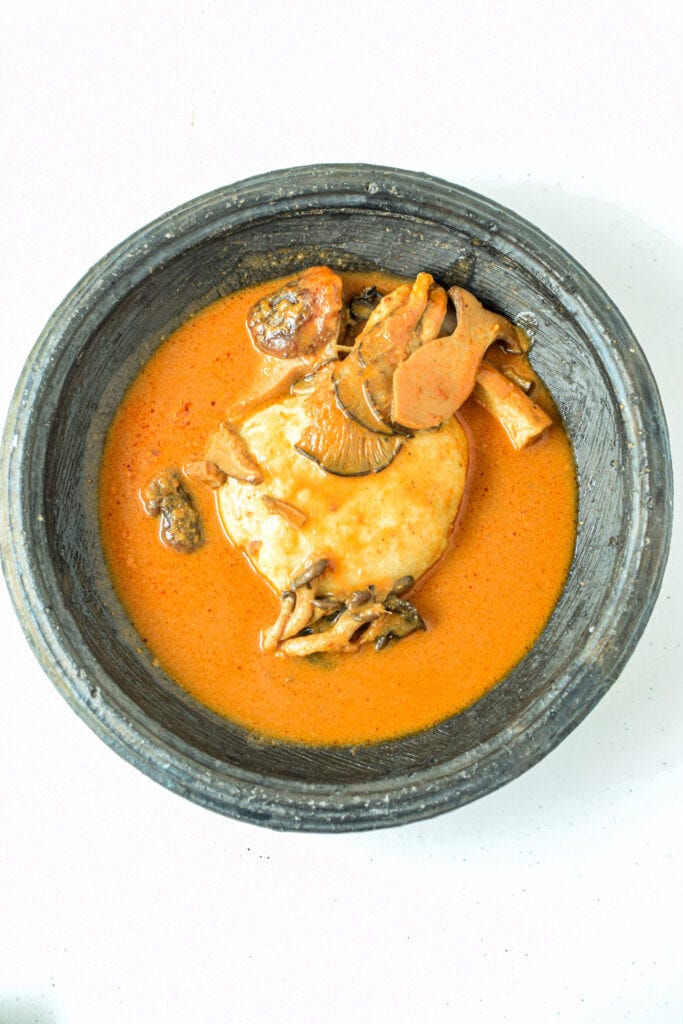
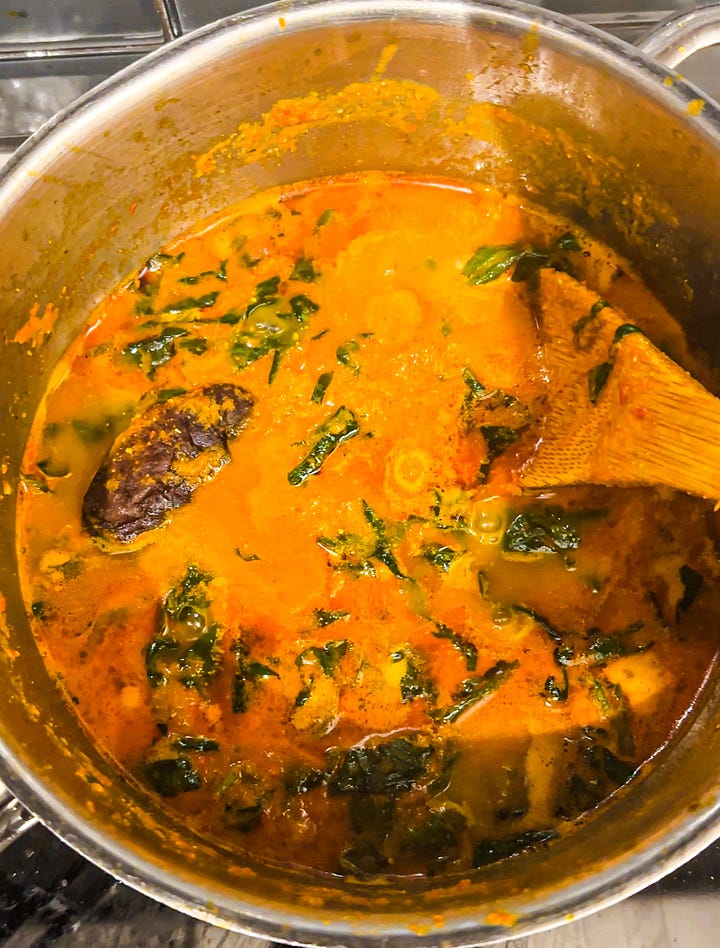
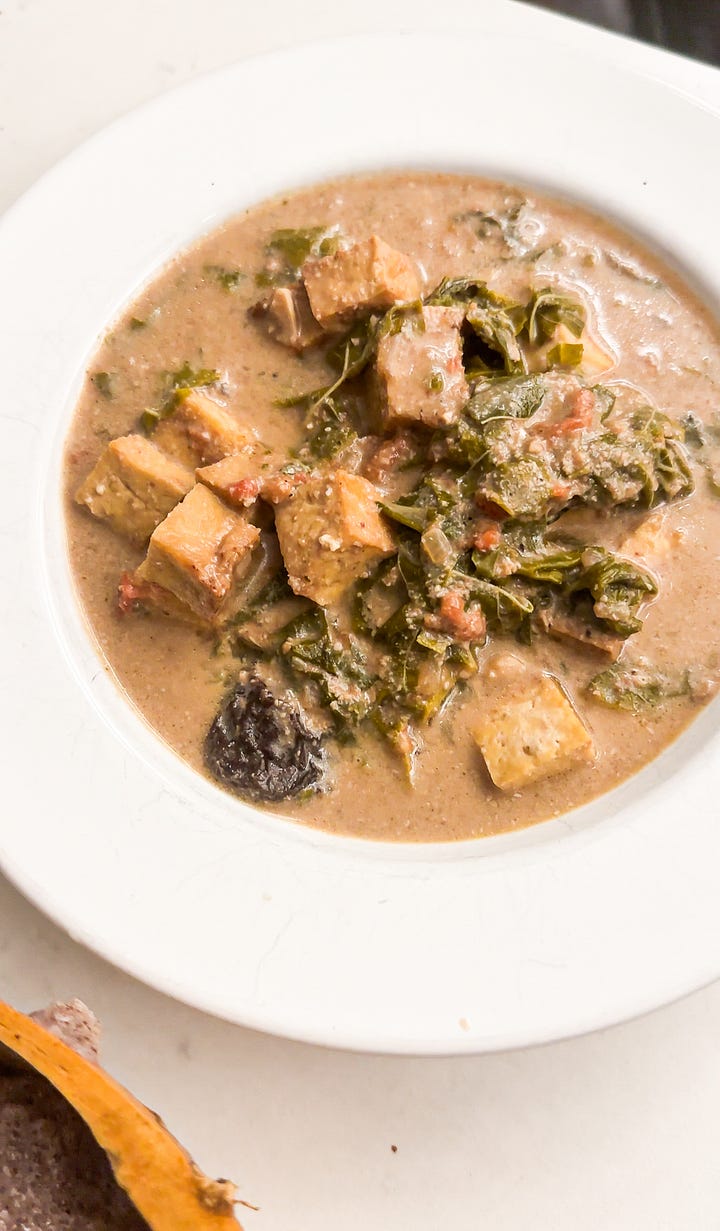

Links to Recipes
Miyan Taushe should be out in the next two weeks, while Bitɔ/Bra is reserved for my book.
Soups
Winter is soup season. Coming from a culture where soup is our bread and butter, I have quite a repertoire of soups I can cycle through. Like peanut soups, I am adamant about building a collection of plant-based approaches to these traditional soups. On my website, we have reached 10 plant-based West African recipes and counting. Top on my soup list this winter has been Nigerian pepper soup: a spicy brothy soup seasoned with indigenous spices, mushrooms, and slightly sweetened with ripe plantain. It has been my go-to for clearing sinuses and maintaining warmth this winter season. In addition to the classics, I have been embracing more fusion. My palm nut soup ramen bowl and my pepper soup pho turned quite a few heads on social media. Living in Toronto exposes you to so many amazing cultures, especially a diversity of Asian cuisines, so I wanted to try my hand to see how I can merge the two together.
Everyday Cooking
Sharing West African food to a mainly western audience has its fair challenges. One of the major hurdles I face is showcasing how West African food is not intimidating or obscure. I am definitely a traditionalist regarding Ghanaian and West African cooking, but I also understand that it might be such a big jump for many who have never encountered the ingredients, textures or flavours. For most of January, I focused on delicious meals that utilize West African ingredients in an approachable way. Some of my favourite meals included a savoury fonio porridge, a roasted millet and oat pancake and a simple vegetable stew.
What I am excited to cook
In parallel to my “Lost” Crops of Africa series, I am diving into essentials in my kitchen, we are talking spices, grains, legumes and oils. I have a recipe for riz au soumbala (also known as mouin kolgo in mooré) coming up which is by far the most savoury recipe I have ever made. I am especially excited about my series on the unrefined oils of West Africa, which is a topic that might feel a bit countercultural as many are afraid of seed oils at the moment. We will be diving into red palm oil, palm kernel oil, groundnut oil (roasted peanut oil), shea butter and coconut oil. I also have a fun idea for an East African-inspired brunch, putting together some of my favourite meals that remind me of my childhood in Tanzania. I am still cooking many recipes from my cookbook as there are many Ghanaian dishes for all moods. Basically, I have a lot to cook.





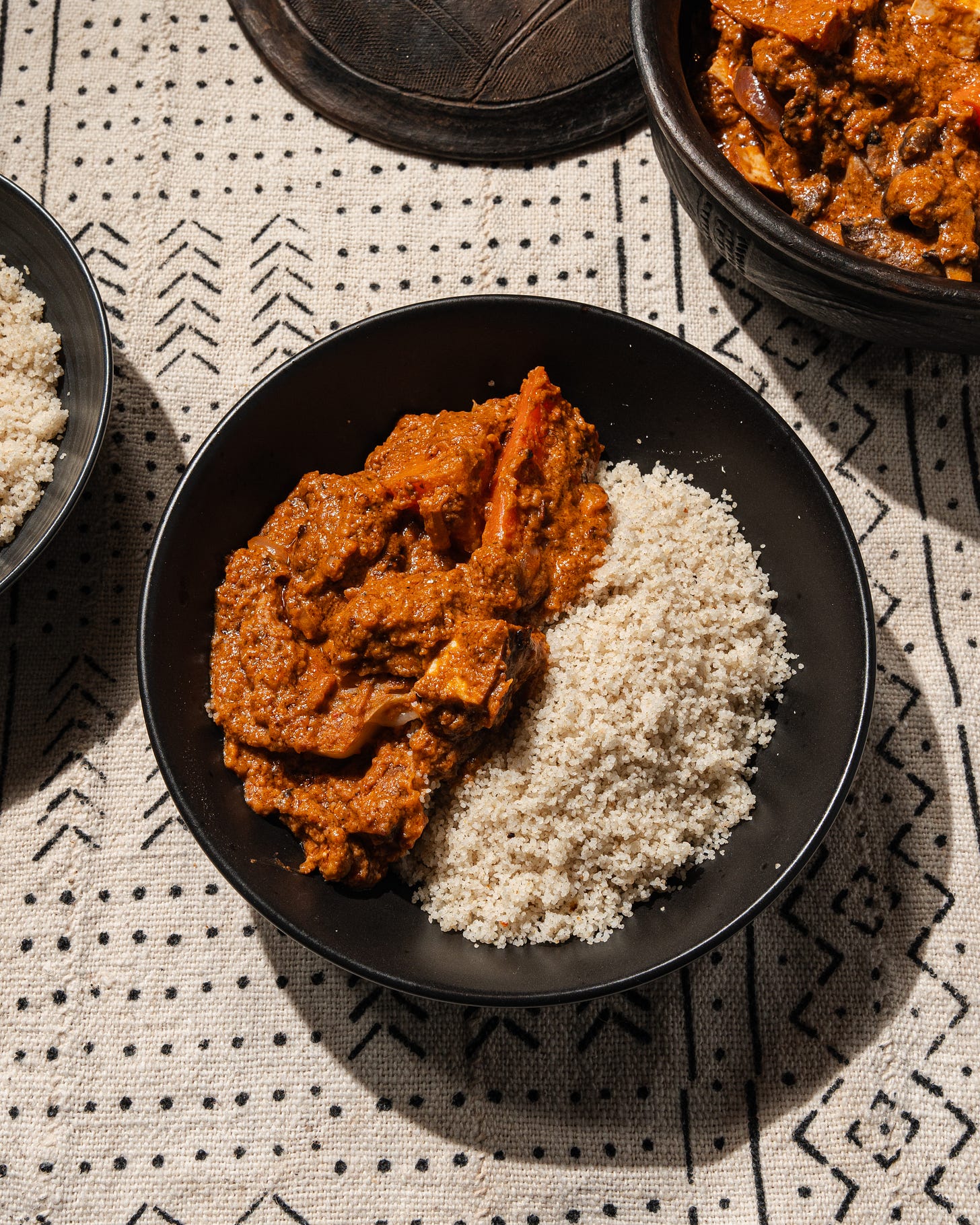
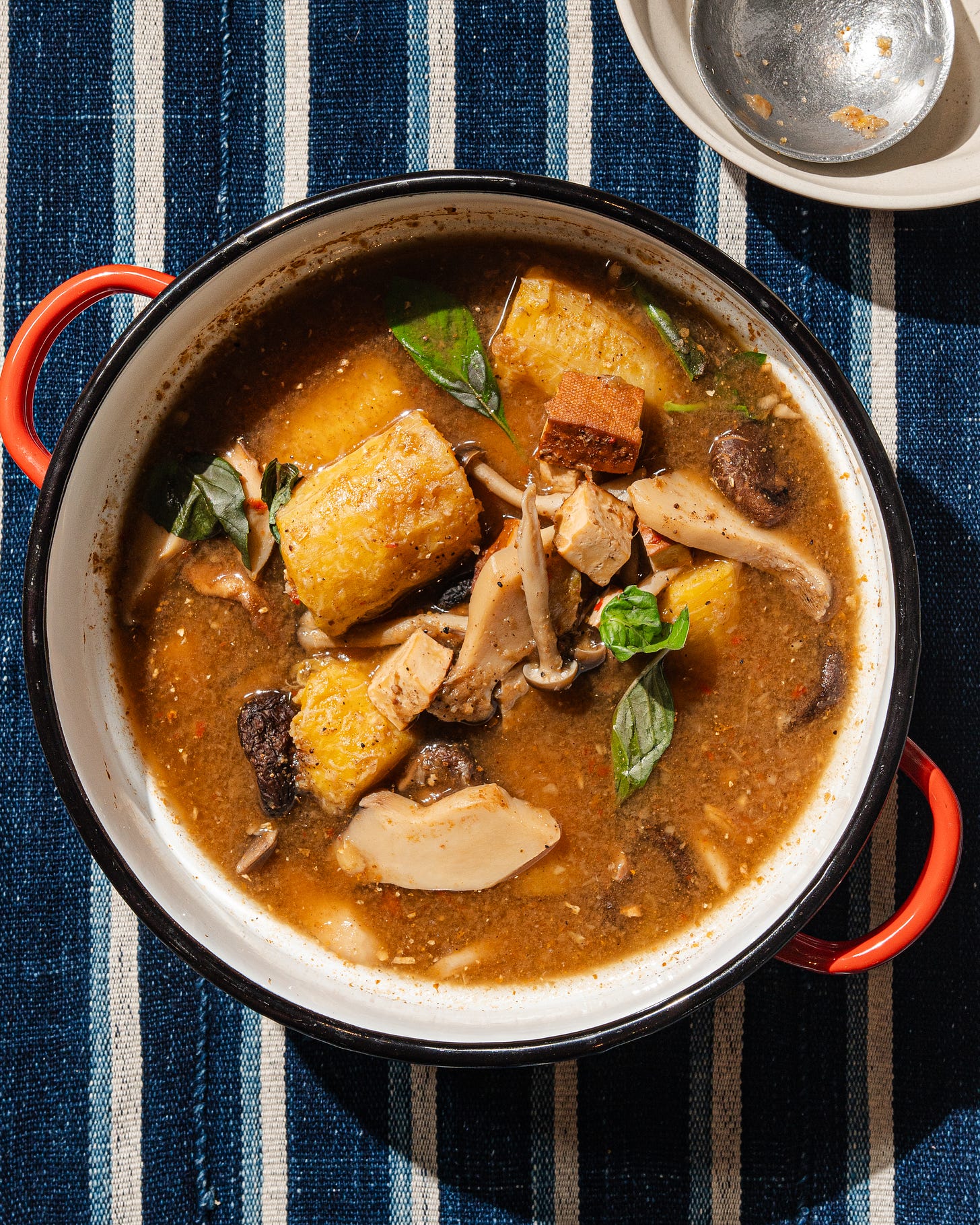

I’ll eat just about any Western or Southern African dish with peanuts in it and mafe is one of my favorites. When I lived in Zambia, my favorite relish was any kind of ifisyashi, or vegetable stewed in a peanut powder. Whether it was cabbage, katapa (cassava leaves), or mushrooms, it was gone as soon as it hit my plate 😂
I come from the eastern part of Maharashtra, the western state of India, where Mumbai is located. And most of our bhajis or vegetable dishes are stew-consistency with roasted & crushed peanut powder for consistency & creaminess. These connections across continents are fascinating!